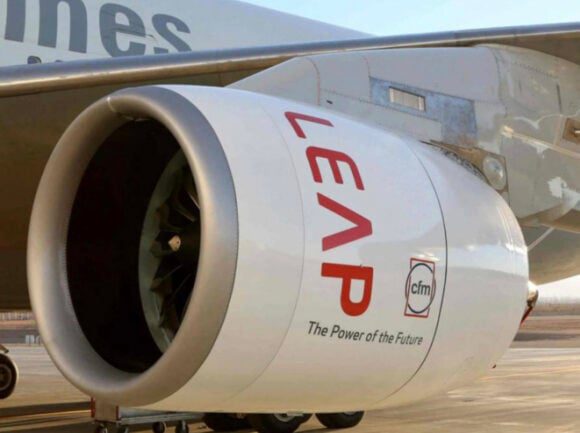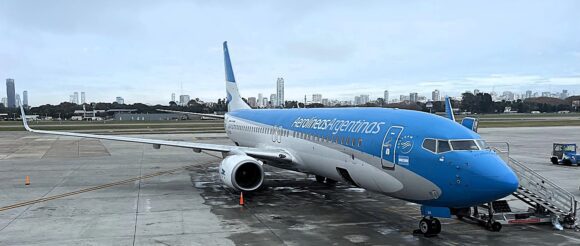
Copyright Pulse Line LEAP R. SORET SAFRAN
CFM International, the 50/50 joint venture between GE Aerospace and Safran Aircraft Engines, announced significant expansions in engine maintenance, repair, and overhaul (MRO) capabilities in both Dubai (UAE) and India. These moves support the growing global fleet of LEAP-powered aircraft, particularly in high-growth aviation markets in the Middle East and Asia. Below is a summary of the key developments.
Investment in Dubai (UAE)
On November 16, 2025, ahead of the Dubai Airshow there was a big announcement. GE Aerospace is investing over $50 million to build a new 120,000-square-foot On-Wing Support (OWS) facility in Dubai South, within the Mohammed Bin Rashid Aerospace Hub (MBRAH). which quadruples GE’s existing Dubai footprint.
The facility will scale operations for quick-turn maintenance, lease pool services, and field deployments specifically for CFM LEAP engines, as well as GE’s engines (e.g., GE9X) and Engine Alliance products. It includes advanced training spaces for upskilling regional workforces.
With over 35% of global LEAP overhauls already handled by GE’s network, this expansion addresses rising demand in the Middle East, where LEAP-powered aircraft (specifically A320neo, 737 MAX) are increasingly common. Dubai’s position as a global aviation hub enhances these faculties to tap into the growing market.
Investment in India
In June 2024, with operations slated to begin in 2025, Safran Aircraft Engines (CFM’s co-parent) is opening a new LEAP engine overhaul shop in India, as part of broader investments in MRO capacity.
This facility will handle growing overhaul needs for the LEAP engine fleet, building on CFM’s “open LEAP MRO ecosystem” model that allows customers flexibility in service providers. This aligns with increasing LEAP adoption by Indian carriers like IndiGo and Air India. Obviously, fast-growing Akasa also benefits from this.
India’s aviation sector is booming, with LEAP engines powering a significant portion of new narrowbody deliveries. The engine shop should improve asset availability and reduce downtime for operators, supporting CFM’s goal of 15-20% better fuel efficiency and lower emissions compared to older engines like the CFM56. Clearly, CFM is driving the LEAP to match the CFM56’s amazing on-wing record. Moreover, the experience to date in India with the GTF burned many network plans.
The Future Outlook
These investments are part of CFM’s long-term strategy to meet surging demand for LEAP services, as the engine fleet expands rapidly (over 3,000 in service by mid-2025). The partnership between GE and Safran, renewed through 2050, emphasizes sustainability, with innovations like the reverse bleed system (RBS) to cut maintenance costs.
No direct joint investments linking Dubai and India were announced, but both facilities contribute to CFM’s global MRO network, potentially enabling cross-regional support for airlines operating in these corridors. Moreover, with a focus on engines, equipment, and services for civil and military applications, the company aligns closely with India’s “Make in India” initiative.
India has the larger footprint for now. As of November 2025, Safran operates 18 facilities across the country, employs nearly 3,000 people, and projects its India revenue to triple to over €3 billion by 2030. In an era of tight supply chains, India must welcome news of plans to multiply sourcing from Indian suppliers by five times, emphasizing local manufacturing, skill development, and technology transfer.
Safran also benefits from its M88 engine being on the Rafale and also powers India’s Mirage 2000. It offers end-to-end assembly of M88 engines in India (which is unique outside France) if orders grow (e.g., recent 26 Rafale-M naval variants).
The effect of investing heavily in these two markets ties the engine OEMs to their customer bases. This is going to create a wall against competition because of the longtail in spares. In the short run, the engine OEMs and nations benefit. In the longer run, less so these two nations. Lots of eggs in one basket works for a while.
Views: 0




